Review for Tokyo Ghoul Root A - Collector's Edition
Introduction
I sort of watched Tokyo Ghoul when it was originally streamed. I say sort of, as I was beholden to Animax’s intermittent streaming service, and most of the gory action was obscured by broadcast censorship. It took All the Anime’s release of Season 1 for me to actually sit down and watch the show in a way that I could actually take the story in, and appreciate it for what it is. Tokyo Ghoul is an interesting take on the monster genre, offering a group of flesh eaters living alongside humans in modern society, with some trying to fit in, and other failing to do so. On the other side, there are aspects of human society that see ghouls as monsters to be exterminated. We’re introduced to this world through the eyes of Kaneki Ken, a young college student who becomes a half ghoul, and in essence straddles both worlds. It’s an intriguing premise, even if Tokyo Ghoul tended to hold the viewers hand through the story. I was certainly looking forward to the sequel series, Tokyo Ghoul √A, not least because the first season left the story on a major cliff-hanger, and also because by this point I had given up on Animax’s spotty service.
Kaneki Ken is a pretty normal university student, enjoys literature, has a close friend in Hide, and a healthy appreciation for girls or at least one girl in particular, Rize. Hide tells him that she’s out of his league, but a mutual like of a certain author is enough to snag him a date. It’s all well and good, but Kaneki lives in a Tokyo where humans have to co-exist with ghouls. Ghouls are supernaturally strong beings who subsist on human flesh, which makes Tokyo something of a happy hunting ground. As luck would have it, Rize is a ghoul who’s actually looking on Kaneki as her next feast. A building site at night is a nice quiet place to eat, but a girder collapse puts Kaneki in hospital, fighting for his life. The doctors have no option but to perform a transplant from the dead girl who was brought in with Kaneki...
When Kaneki comes around, he’s become a half-ghoul, taken on their invulnerabilities, and some special powers, but he can only eat human flesh. That isn’t going to happen, and the self-loathing and despair drives him into seclusion. But the cafe that he and Hide frequent, Anteiku, turns out to be a ghoul gathering place. It’s where Kaneki learns the other side of the coin, that not all ghouls are monsters, most ghouls are just people who want to coexist with humans, and Anteiku’s manager helps Kaneki find his place in this new world. He also has some dubious help from Anteiku’s harsh waitress Touka. But some ghouls really are murderous monsters, and the half-ghoul half human tantalises their taste buds, while from the human side, there is the CCG organisation tasked with hunting down the monsters, and cleansing Tokyo of the ghoul menace, even if they’re just trying to fit in. But a half-ghoul half human might just be the bridge that the two sides need.
That was the synopsis of season 1, but the first season ended with Kaneki captured by the Aogiri Tree faction, in which Touka’s brother Ayato has a prominent role. Tortured by a particularly sadistic ghoul named Yamori, Kaneki was forced to face his true self, an internal confrontation that triggered a dramatic transformation, and set him on an unexpected path. The ramifications of that choice reverberate through season 2 of Tokyo Ghoul.
12 episodes of Tokyo Ghoul √A are presented across two Blu-rays from All the Anime.
Disc 1
1. New Surge
2. Dancing Flowers
3. Hangman
4. Deeper Layers
5. Rift
6. Thousand Paths
7. Permeation
8. Old Nines
9. City in Waiting
Disc 2
10. Last Rain
11. Deluge of Flowers
12. Ken____
Picture
Tokyo Ghoul √A gets a 1.78:1 widescreen 1080p transfer. These discs are essentially the Funimation discs reworked with an All the Anime logo, so the image quality will be the same. It’s clear and sharp, with strong consistent colours throughout. Tokyo Ghoul is a quality animation with production values evident on screen, and the HD resolution brings out the detail and visual impact to excellent effect. However, these being Funimation masters opting for the usual dual layer single layer disc distribution, digital banding is a little more evident than Anime Limited’s home authored discs and unfortunately, this time it’s a little too evident during playback. I especially found it distracting during episode 8, and it was at Psycho Pass levels at times.
You don’t have to worry too much about censorship in the second series, as while there is plenty of action, blood and guts, the exploitative torture porn aspects of the show have actually been toned down. It seems that Kaneki has been through the worst that the ghoul world can throw at him, and now it’s just a matter of kicking ass. It does feel as if Tokyo Ghoul’s second season is more generic as a result. It’s lost something indefinable that made it feel unique, and the show didn’t really grab the attention the way the first season did.
The images in this review are kindly supplied by Anime Limited.
Sound
Just like the first season, it’s the usual Funimation options of Dolby TrueHD 5.1 Surround English, and 2.0 Stereo Japanese, this time with subtitles and signs locked to the appropriate track. As usual for Funimation discs, the audio levels are a little lower than normal. I went with the Japanese audio, and was very happy with the experience, the actors were cast well, and the stereo gave enough space for the action, and the squelchy, bone crushing sound effects. The subtitles are timed accurately, and are free of typographical errors. I gave the dub enough of a spin to ensure that it exists on these discs, and from what little I heard, it didn’t sound too bad.
Extras
The discs present their content with animated menus.
Disc 1 autoplays with an annoying trailer for Funimation Now.
The sole extra on this disc is the audio commentary on episode 1, a more measured Funimation commentary track from ADR Director (and voice of Amon) Mike McFarland, Brandon Potter (Shinohara), and Todd Haberkorn (Ayato). Beware of spoilers for season 2, and this is another recent commentary where they talk about the novelty of the broadcast dub.
Disc 2 autoplays with a far more pleasant trailer for the Psycho-Pass Movie.
On here, you’ll find the episode 7 video commentary, where you can actually see ADR Director Mike McFarland, Brandon Potter, Maxey Whitehead (Juzo), and Lindsay Seidel (Eto/Sen) commenting on a little postage stamp sized video in the corner of the screen.
The episode 12 Commentary is a conventional audio affair, with Mike McFarland again, this time with Austin Tindle (Kaneki), Brina Palencia (Touka), and Clifford Chapin (Hide).
You get 1:40 of Promotional Videos, the textless opening, rendered less than textless by player locked subtitles, the US trailer for the show, and further trailers for Assassination Classroom, Garo the Animation, Yona of the Dawn, Ghost in the Shell: The New Movie, Rage of Bahamut: Genesis, and Black Butler: Book of Murder.
I haven’t seen the packaging or the hardback artbook that comes with this Blu-ray Collector’s Edition to comment.
Conclusion
That was... boring? Horror has never been my genre of choice, and of the various horror subtypes, ghouls rank with zombies for triggering my switch-off-o-meter, but I actually enjoyed the first season of Tokyo Ghoul, albeit it with a few reservations about its narrative style. It was the whole approach to its story that hooked me, the unlikely teenager turned into a ghoul by a freak accident, and becoming the bridge between two worlds, half-human, half-ghoul, and also our eyes into the bizarre society that has resulted, where ghouls live side-by-side with humans, albeit with a whole lot of friction and hatred on both sides. It was a nice, small-scale story that focused on its characters, and when you take that approach to storytelling, then like or hate the genre, the story will hold the attention. All of that good work is undone with Tokyo Ghoul √A, a sequel which loses all that made the first season interesting.
For one thing, the characters that made the first season so compelling are hardly in it. For me, Tokyo Ghoul was about Kaneki and Touka. Kaneki’s a changed ghoul after the opening episode of √A, coming through his torture with a new look, and a new attitude towards life. He’s become something of a superghoul, a force of nature, close-lipped, wandering through the series on a journey of self-discovery perhaps, but not exactly vocal or demonstrative. It’s never made clear just why he’s doing what he’s doing, but one thing is for sure, he’s not exactly keen on social interaction any more. This has the effect of sidelining Touka, who previously was a main character, but here has been reduced to the occasional cameo during the series apart from the series opening and closing episodes.
You might be wondering what this second season is about, if not the first season protagonists. It turns out to be about the anti-ghoul organisation, the CCG, and their hunt for Aogiri Tree and Owl, the ghoul resistance organisation, and the legendary figure. Given that the first season spent a goodly amount of time establishing the members of CCG as antagonists, villains of the worst order, to have them as protagonists in the second season is asking a lot, certainly more sympathy than I could engender. Amon was the most interesting of the CCG in the first season, and he does a fair bit to carry the load here. But I couldn’t care less about Juzo’s tragic past, or about the various other members of the CCG.
That leads to another problem, that of character overload. There are so many new CCG members, so many new masked ghouls of Aogiri Tree, that I couldn’t keep them straight; I spent too much time wondering if they’d actually played a part in Season 1, or if they were new additions to the cast here. It was a distraction from the story, especially as the show’s stabilising centre, that of Kaneki, Touka and the ghouls of the Anteiku coffee shop were now secondary. As to why things happen in Tokyo Ghoul √A, I’m pretty unclear on the whole thing. Motivations remain clouded, the writing is obscure, and there’s no real direction or momentum to the story. Things just seem to happen because.
The biggest problem for me is that this second season is open-ended. We’re not talking cliff-hanger as in season 1, rather it’s that almost every storyline and plot thread that begins in season 2, fails to see resolution. It’s a show that toys with an idea, develops a story only so far, then forgets about it, as if deliberately taunting the viewer with the dangling carrot of a potential third season or movie spin-off, or urging them to pick up the manga instead. I suppose the biggest, most obvious difference is that whereas the first season concentrated on the characters, and their personal stories, season two focuses on a bigger picture, but it loses something fundamental as a result.
It shouldn’t be like this. After all, there is plenty of drama to go around in season 2, the continuing conflict between the CCG and Aogiri Tree, leading to some spectacular set pieces, including a raid on a ghoul prison, and the climactic battle during the last four episodes. It should grab you by the throat, have you invested in what’s going on. But the prison break suffers from that character overload (who are these people?), while the climax of the show goes full on shonen, with each side levelling up consecutively, the balance of power shifting back and forth until eventually a winner is declared. One of the CCG moustaches even calls out his special moves!
Tokyo Ghoul √A bored me! There, I said it. It’s a dull, dispiriting follow-up to a first season that showed great promise, and a degree of originality. It loses everything that made that first season so watchable, and it has nothing to replace that with.
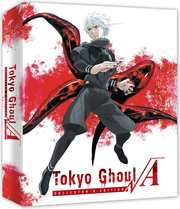
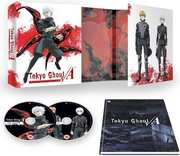

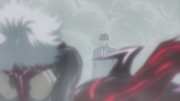
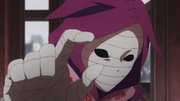
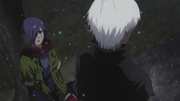

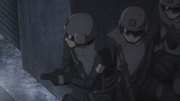
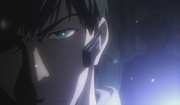
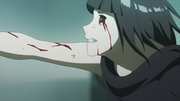
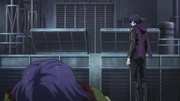
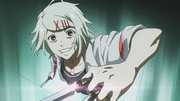



































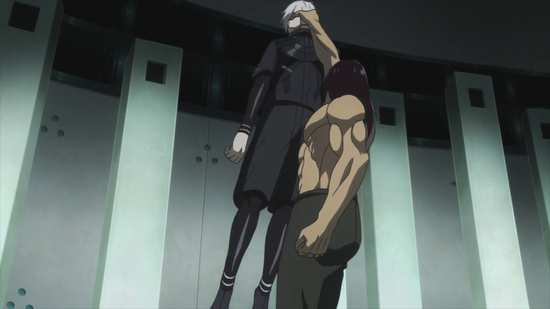






Your Opinions and Comments
Be the first to post a comment!